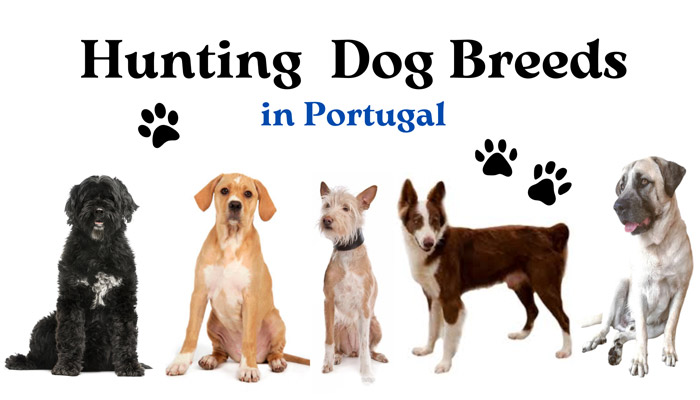A dog is not just an animal that brightens up our leisure and loneliness. This is a devoted, intelligent, selfless being who seeks to help a person, to participate in his life. The dog guards us when we sleep, guards the house when we are away, follows us everywhere and cannot imagine his life without his master.
Currently, there are many new breeds obtained by crossing. Many of them, despite their cute appearance, turn out to be weak, having genetic defects and diseases characteristic of each individual species. But despite this, in Portugal there are still breeds of dogs that appeared centuries ago. The blood of their ancestors flows in their veins, they are real defenders and hunters.
The Portuguese Water Dog (Cão de Água Português)
In the past, a Portuguese Water Dog was an indispensable assistant and friend of fishermen, who lived on the coast of the ocean in the southern region of the country, the Algarve. Dogs helped them in daily labor, making up the company.
Today it is a member of the family. Without accompany the dog get sick, because it needs communication. In 1981, this breed was marked in the Guinness Book as the rarest dog breed in the world. It was saved from extinction by the breeders.
Also, Portuguese Water Dog has a huge advantage. It is hypoallergenic! In appearance, this breed of dog resembles a black poodle. She’s just as curly.
The Portuguese Pointer (Perdigueiro Português)
This hunting dog was used, in most cases, for bird hunting. In the XVI century only nobles were allowed to keep this type of breed. And then, when the majority of the population dispersed in pursuit of new lands and treasures, there was no one to cultivate lands, people began to hunt more often and this breed began to appear not only among the nobility’s families. Today it is still used for hunting.
According to some sources, this breed has not changed its appearance for at least a thousand years: a square head, triangular ears and a compact appearance. This breed is so attached to its owner that it is sometimes aggressive towards other dogs because it prefers human society.
The Portuguese Podengo (Podengo Português)
The Portuguese Podengo is hound, that sometimes named as Portuguese rabbit dog. This breed is common in northern Portugal. The climate difference determined the variety of coat types: short and smooth or long and wired. Short hair dries better during prolonged rains in the North of Portugal, and hard fur protects dogs against the heat during the summer and the cold in winter in the South of the country.
Also, Portuguese Podengo is divided into three size types: small, medium and large. Large Podengo is used for hunting the wild boars, as guard and companion dog. The legend tells that the ancestors of this breed were Egyptian dogs, who were brought to The Iberian Peninsula by the Phoenicians.
It is very energetic dog, likes running and fooling around, very social and not aggressive!
The Algarvian Barrocal dog (Cão do Barrocal Algarvio)
The closest relative of this breed is the Persian or Egyptian greyhound, distributed by the Phoenicians and Berbers throughout the Mediterranean basin. The breed took root in the south of Portugal, in the Barrocal sub region (the limestone hills with vegetation coverage).
Initially, dogs of this breed hunted hares. In the 60s of the XX century, this breed almost disappeared because of the importation of other breeds. The breed was saved by the breeders, who had united in an association.
The Algarvian Barrocal dog has distinguishing features: pointy ears, almond-shapes eyes, short coat, but long fur on the tail and paws. This dog is full of energy, friendly and ideal as a pet or hunting dog.
Rafeiro do Alentejo
A large dog, aggressive towards strangers, is an excellent guard of large estates in the Alentejo region, in the south of the central part of the country. However, at the same time, he is a good friend in the people’s families. The weight of an adult can reach 60 kg. Try to carry such a dog in your arms!
The Portuguese themselves, when they made great geographical discoveries and settled in the new territories, brought these dogs to Newfoundland.
The temperament of this breed is calm and “slow”, independent and protective. Because of its large size can be dangerous, if a dog was not socialized at the early age. The bread needs an experiences dog handler to be trained, because it can do not respond to traditional methods of dog obedience trainings.
The average life expectancy of all these dog breeds is 12-15 years. This is very small for breeds that can bring such a big benefit! Of course, we do not have animals to serve us until our last breath. However, unfortunately, nature does not take into account the emotional component of the owners.
Conclusion
The listed breeds of dogs can do a good job with the housework and even perform work beyond the control of a person. Namely, to hunt down game or catch a wild animal. Despite this, you can still meet dogs of this breed in shelters. Perhaps their appearance is not as attractive as pocket dogs. It does not matter. They still need your love and care. And we are glad that this article introduced you to them.
And if you are not ready to take the dog into your home, you can provide all sorts of help. But don’t forget that these dogs “speak” Portuguese!

